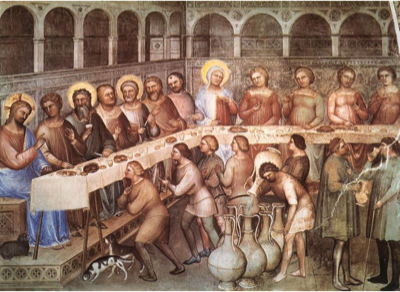Case-study /
Sorry, no more wine! Tuscan agriculture in a climate change regime

Introduction
This project explores the best adaptation options and strategies for Tuscan viticulture given its particularities, constraints, weaknesses and strengths, in a climate change regime and try to reduce the intrinsic uncertainty of climate change, by assessing more adaptation options.
The adaptation challenge is the high risk associated with the long-term perspective bound to a cultivar such as grapevine: many of the adaptation options (either moving the vineyard or changing the cultivated variety) are irreversible, at least in the short-term, for many farmers.
Turning points for wine production in Tuscany, Italy (pages 8-9, Werners et al, 2013)
Social-political thresholds of interest
This case study explores wine production in Tuscany, Italy under climate change. Wine production in the region is progressively changing from mixed farming system to specialized viticulture. Part of this change is the rediscovery and improvement of traditional and autochthonous vines and a switch to quality production with lower yields, less chemicals and increased value of produced wine. The number of vine-growing farms has been reduced by half over the last 20 years, while average farm size has increased. Significantly, more than half of the total regional vineyard surface is labelled as Designation of Origin (DO).
The associations and unions in the region offer incentives in support of the above mentioned specialisation. Regione Toscana encourages the renewal of old vineyards, on the basis of farmers application and selection. Associations also create awareness that agriculture has created a unique landscape in Tuscany that is both productive and internationally recognised for its beauty. The image of the vineyard, surrounded by the classic, quiet and clean Tuscan landscape, offers a competitive advantage for the wine that is produced there. Thus, agriculture has both an economic, and environmental and landscape value in Tuscany. At the same time the strict landscape conservation and production rules can limit adaptation.
Farmers in Tuscany already observe consequences of climate change and express an increasing interest in adaptation. A key question is whether climate change will make farmers change grape varieties, move to other locations or switch to other livelihoods. Here it is feared that changes in viniculture could have detrimental effects on the landscape, and therefore on tourism and quality of living. After stakeholder consultation the main questions and thresholds of interest are:
- (when) does wine production in its current form become unviable in the region?
- (when) does adaptation become attractive? Farmers expressed an immediate interest in two adaption strategies: moving production to higher elevations and changing to new varieties. These adaptive actions have a response time of at least 4-10 years (the time it takes for a new wine yard to become productive). Farmers and government represent- atives stress the crucial importance of assessing wine quality, rather than the more typically modelled production quantity, as the survival of Tuscan viticulture is strictly linked to its high-quality wines.
Climatic conditions for reaching thresholds
Farmers already observe a strong relationship between an increase in temperature and the reduction of the vegetative cycle of the vine. The grapes are ripening earlier compared to twenty years ago, with consequent advance of harvest operations. Literature finds improvement of wine quality with rising temperature at first, yet falling beyond a certain threshold, depending on variety. This corresponds with a shift in the area best suitable for grapevine cultivation either to higher elevations or to higher latitudes.
Adaptation turning points and lessons
A farmer reaches an adaptation turning point the moment that wine quality drops below a desired quality or wine of a higher quality can be produced at a higher elevation. To assess whether and when this may happen the study used a modelling framework for investigating climate change impacts on viticulture in the Tuscany region (Moriondo et al., 2011). Downscaled climate data (temperature, precipitation and CO2 level from observations and the IPCC SRES scenarios A2 and B2 from different climate models) are input to a vintage quality model for climate change impact assessment. The vintage quality model uses a multi-regressive approach and vintage ratings obtained from the most recently published Sotheby’s vintage ratings. The ratings are on a scale from 0 to 100, with the general categories of 0–39 disastrous, 40–59 very bad, 60–69 disappointing, 70–79 average to good, 80–89 good to very good, 90–100 excellent to superb.
Citation
Werners et al. (2013). Adaptation Turning Points: Decision Support Methods for Adaptation, MEDIATION Project, Briefing Note 9.
The research leading to these results has received funding from the European Community’s Seventh Framework Programme (FP7/2007-2013) under grant agreement no. 244012
